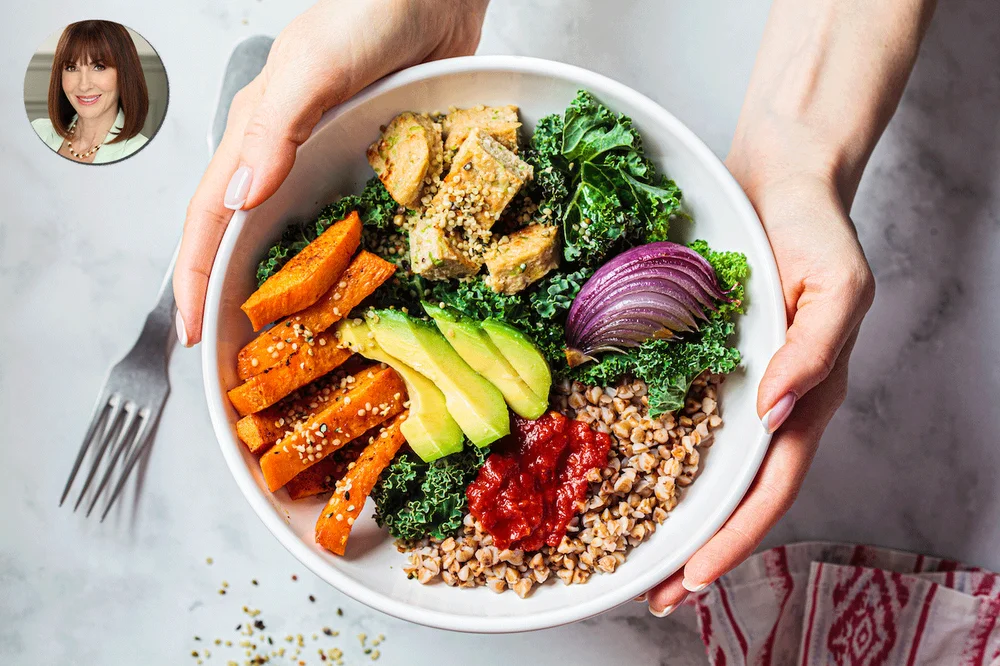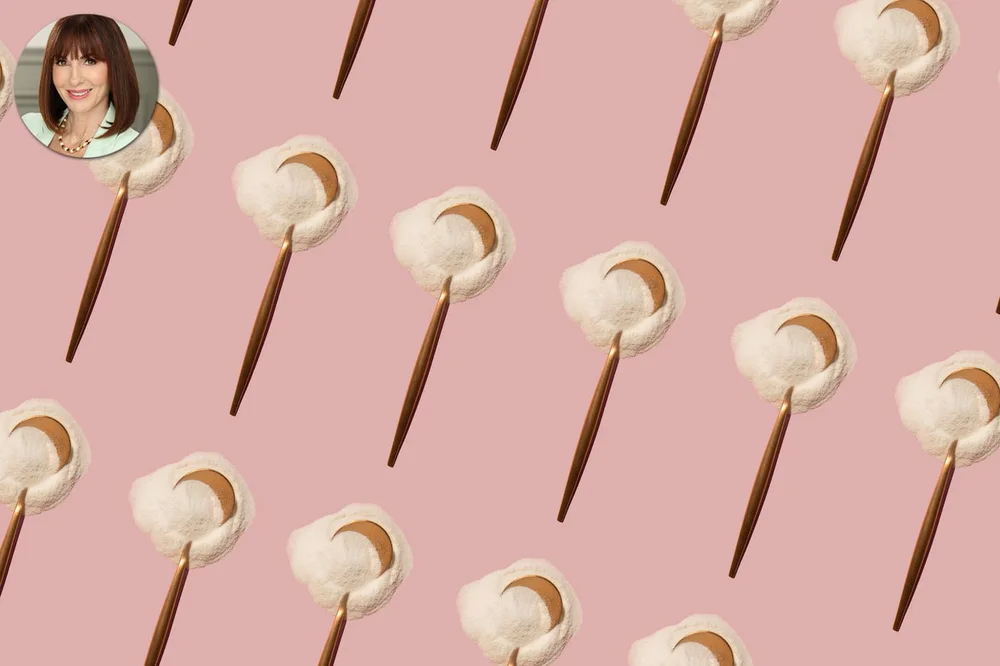Plant-Based Nutrition: A Beginner’s Guide to Thriving on a Vegan Diet
Back when I was in nursing school, inspired by the strong connection established between eating plant foods and achieving optimal health, I tried a vegan diet. Imagine my surprise when, after 3 months, I got some blood test results back. Surely they’d show my health had improved—right? Nope!
I realized I made the same mistake that a lot of people do when they go vegan: eliminating the meat and other animal products but replacing them with loads of fruit, pasta, bread, and other grains. No wonder this diet had actually increased my triglycerides and cholesterol levels.
Yes, I’m a huge proponent of ditching all dairy and eating loads of delicious veggies. But if you’re adopting a vegan diet, you must choose the right foods and refuse the wrong foods to maximize your health benefits.
Let’s go over some basics to help you get started.
What Is Vegan?
Many vegan beginners are confused about what can and can’t be consumed, so it’s useful to define this diet. In short, vegans don’t eat anything that’s animal derived. So, while it’s fairly obvious that meat is off the menu, you may not realize that you’ll have to avoid products like honey, beeswax, dairy, eggs, and the many foods that have not-so-obvious animal ingredients.
For example, you might be surprised to know that fish sauce is hiding in your Asian meal, or that Worcestershire sauce contains anchovies. Gelatin is made from animal bones and tissues. Soups often contain beef or chicken broth. And confectioner’s glaze is actually made from the secretions of insects.
As a vegan, you’ll need to carefully scan labels and do your research. On the positive side, there’s now a wealth of information about ingredients available online—just make sure you’re checking with a reputable source. The best way to ensure you’re eating 100% vegan is to avoid processed foods and to cook from scratch at home—which I recommend doing anyway, regardless of your diet.
How to Start Being Vegan: My Top 3 Tips

1. Don’t fall into the “fake meat” trap.
Nowadays, you’ll find a ton of “meat replacements” on grocery store shelves. Fake chicken, ham, bacon, beef—you name it, it’s out there. Many beginning vegans assume these are a simple swap and rely on them heavily as they plan their meals. But this is another reason why you must read labels—you’ll find that many of these vegan meat replacements are processed and filled with nitrates and fillers. If you do choose something in this category, read the ingredient list and nutrition label first. These products, like many processed foods, can have sky-high sodium or saturated fat counts.
2. Understand which nutrients you need.
When you go vegan, you’ll be missing out on some key essential nutrients. Essential nutrients are those that your body doesn’t make on its own, so you must consume them in your diet or through supplements. For example, a vitamin D supplement will help provide both vitamin D (which boosts immunity and helps the body absorb calcium) as well as iron, to promote healthy blood and energy levels and prevent anemia. Because you won’t be consuming omega-3 fatty acids—necessary for the brain, heart, and joints, and offering anti-inflammatory, cholesterol-improving effects—take algae-based omega-3 DHAs. (Don’t rely on flax oil, which can cause inflammation.)
Meanwhile, you can get 9 of the 20 essential amino acids (the building blocks of our cells) through BrainMD’s OMNI Protein powder, which is vegan-friendly. Vegans are particularly vulnerable to shortages of lysine, threonine, tryptophan, and methionine. OMNI Protein powder’s branched-chain amino acids promote muscle health and energy to support a vegan diet. Finally, be conscious of your vitamin A and B12 intake. Both can be consumed through a quality multivitamin, but it’s also a good idea to increase your intake of vitamin A-rich foods. I recommend consuming 6 times the beta carotene on a vegan diet, so load up on produce that’s bright red, orange, and dark green.
3. Choose your foods carefully.
You can be vegan and still have a seriously unhealthy diet. If you’re living on French fries, white bread, and candy, you definitely won’t feel any better as a vegan. So let’s look at some general advice on what to eat—and what to avoid:
- Beware of genetically modified organisms (GMOs). Common culprits include corn and soy—respectively, about 85% and 80% of our supply of these are GMOs, and these two ingredients are present in many processed foods. Also ditch canola oil for healthier oils, like coconut, avocado, olive, macadamia nut, sesame, or walnut. Swap out addictive, empty-calorie white sugar for stevia. And choose organic for vegetables, such as zucchini, that tend to be GMO.
- Consume plant-based protein at least twice daily. In addition to adding OMNI Protein powder to your morning smoothie, incorporate 2 to 4 ounces of organic tofu or tempeh (made from fermented soybeans and rich in vitamin B12) in your meal. Vegetables like spinach, as well as grains like quinoa, can also be great protein sources. Lentils and beans contain amino acids, but because most legumes and grains actually contain compounds that are digestive inhibitors to protein, I recommend eating these in moderation.
- Avoid vegan junk food. French fries, potato chips, white potatoes, rice, bread, candy bars, or donuts, even if they’re vegan, should be on no one’s shopping list. Foods like these quickly increase inflammation in your body and raise your blood sugar. These staples of the Standard American diet (SAD) also boost your risk for mood issues and brain fog. If you’re going vegan, select a diet of unprocessed, raw or lightly cooked whole foods. Stick to the produce, not processed-food, aisles of the supermarket.
Plant-Based Diet Essentials
The good news is that, following my advice above, you should be getting plenty of complex carbohydrates and protein. In The Omni Diet, I recommend that 70% of your daily calories should come from complex carbohydrates. Everyone—even carnivores—should eat 9 cups of vegetables each day, which you might find easier on a vegan diet. Simply include veggies with each meal and snack to stay on target. Then make sure you obtain healthy fats through high-quality sources, including avocados; raw, unsalted tree nuts and seeds; and healthy oils such as coconut oil, macadamia nut oil, and extra-virgin olive oil.
Here are some more healthy, vegan-friendly foods to keep on hand at home:
- Hummus, salsa, and guacamole for dipping raw vegetables
- Shirataki, soy-free noodles (use these instead of pasta—my favorite brand is Miracle Noodle)
- Unsweetened almond milk or hemp milk (to replace cow’s milk), as well as coconut milk
- Almond, macadamia nut, or cashew butter (avoid peanut butter, which is high in omega-6 fatty acids and susceptible to contamination)
- Flax seeds, chia seeds, hemp seeds, and hemp seed oil
- Raw, unsweetened cacao (not commercial cocoa) and raw cacao nibs
- Tofu (as an egg replacement, 8 ounces of firm tofu is about the equivalent of 4 eggs)
- Fresh and dried herbs and spices, which provide rich nutritional benefits and extra flavor
- Small amounts of fresh and frozen fruit—the best choices are organic strawberries, blueberries, raspberries, and blackberries
- Superfoods (try maca root, goji powder, lacuma, and pomegranate)
Embracing Whole Foods for Better Health
Scientists have gone back and forth about determining which is healthier—a vegan or carnivorous diet. Regardless, many of the same rules apply: read labels, be mindful of ingredients, choose your foods wisely, and avoid the health-sapping SAD foods that create disease in favor of whole foods that will truly nourish your body. Following these guidelines, you’ll be on your way to improved longevity and better health, no matter what diet you choose.
- Screen Time and Brain Health: Setting Healthy Limits for Children - April 16, 2024
- Raising Brain-Healthy Kids: Tips for Parents to Support Cognitive Development - April 11, 2024
- Healing from Trauma: Empowering Stories of Resilience and Recovery - April 5, 2024




Hi Tana,
Thank you for the article. Something you may want to investigate when promoting veganism and vegetarianism is the impact of oxylates, espeially in vegan and vegetarian diets. If one has a high intake of oxylates, one will have increasing systemic inflammation that will likely be misdiagnosed as one or some of many common diseases. Oxylate clearing is a slow process, so unless one on a high veggie diet consciously avoids high oxylate foods, oxylate toxicity increases in body tissues. That is a bad thing. Oxylate dumping is very painful which occurs when oxylate intake is so low that the body senses that it can start releasing stored oxylates, but it does it too quickly. Beware, it is very painful.
God bless and protect you all,
Mike
Tana is on target with her article Plant-Based Nutrition: A Beginner’s Guide to Thriving on a Vegan Diet! Thank you for doing the research and simplifying the strategies for a better standard of eating to live. I love how you even have products listed that we can purchase while reading this valuable article.Thanks Amen Clinics for making my life better!! 🙂
Be careful with the words.
Being vegan means eating real plants, not eating the new “plant-based” processed junk food, such as pretend hamburgers made out of some plants, but highly processed, with a lot of chemicals.
In a way, “technically*, grain based junk food IS “plant based”.
Many of the chemicals are petro-chemicals and this used to be called “organic chemistry” (nothing at all to do with “organic” foods!) but it is industrial processing/ transformation chemistry, and using compounds derived from dead plants that died millions of years ago: Fossil Fuels. We will soon see tons of those new “plant-based” toxic junk foods.
Be careful with words, because Marketing already uses them to trick and mislead people who do not have the education to realise the differences between Vegan and “plant+?-biased” processed foods, or between organic foods and “organic chemistry” of industrial processing based on fossil fuels.
I .myself got tricked 50 years ago when I went to uni to study maths, physics, and chemistry. I was interested in the chemistry of biology, but they only taught us “organic chemistry” – transforming metals, types of plastic etc. I didn’t do well because I had no interest In that kind of chemistry. I wanted to learn about photosynthesis, for example, not synthetic plastics or drugs.
Careful with the words